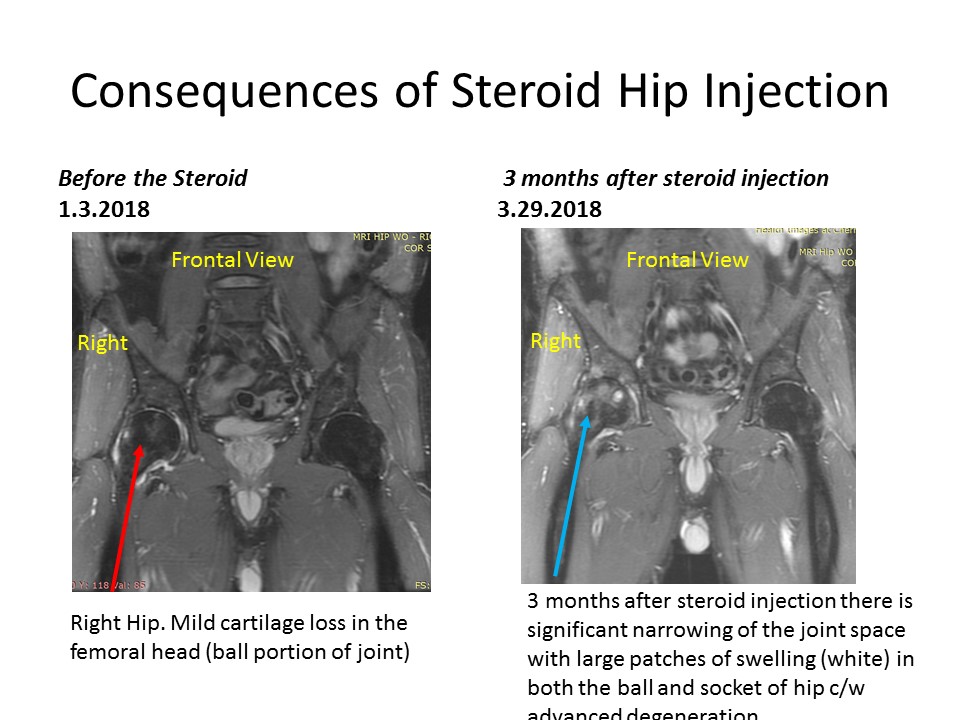At the Centeno-Schultz Clinic we understand the significant adverse consequences of steroids. These include the following:
- A hip steroid shot given during the year prior to hip replacement surgery increases the risk for surgical infection by 37% and risk of a second hip replacement surgery (within two years of the first replacement) by 53%.
- Steroids, in the usual doses, kill mesenchymal stem cells (the most common stem cells used to treat orthopedic conditions).
- Taking oral steroids increases the risk of osteonecrosis of the hip.
- Steroid shots may provide short-term relief, but they inhibit healing, and pain will return with more severity.
- For up to three weeks following a steroid injection, the steroid suppresses your response to stress by negatively affecting your hypothalamus-pituitary-adrenal axis (HPA axis)—the stress-management hormones.
Clinically, we have see significant interval progression of hip osteoarthritis after steroid injections.
The Consequences of One Patient’s Hip Steroid Injections
RB is a case in point. He is 66year-old CrossFit enthusiast who presented to the Centeno-Schultz Clinic in January of 2018 with a history of right hip pain that was intermittent in frequency, progressive in nature, localized deep in the joint, and associated with restriction in his range of motion. He underwent a steroid injection weeks prior to presentation to our clinic. Given the significant progression in his hip pain, a new MRI was performed, which is displayed above.
On the left is the hip MRI that preceded the steroid injection. Note there is mild cartilage loss in the femoral head identified by the red arrow. The image on the right is three months after the steroid injection and is significant for advanced narrowing of the joint space, swelling in both the femur bone (the ball of the joint) and acetabulum (the socket of the joint). There are newly developed white circular cysts in both the ball and socket, which represents bone injury. OUCH!
Avoiding the Steroid Consequences with Orthobiologics
The Centeno-Schultz Clinic utilizes orthobiologics, such as platelet-rich plasma (PRP) and bone marrow-derived stem cells in the treatment of hip injuries, thereby avoiding steroids and the negative consequences.
You can review our live hip outcome data results, which includes patients treated to date and includes pain, function, and overall joint improvement, by clicking here and selecting the “Hip” option.
